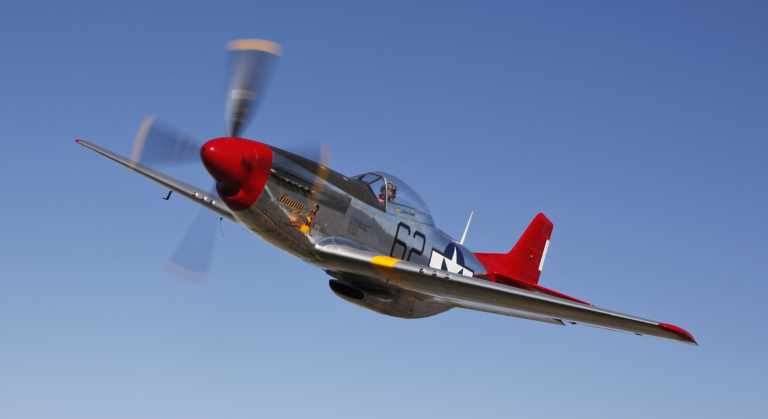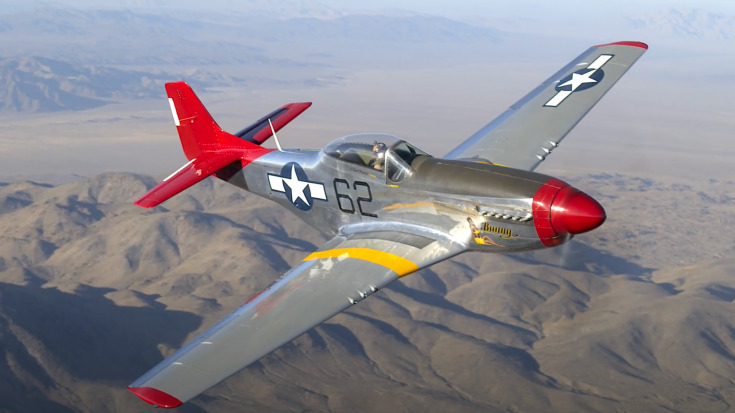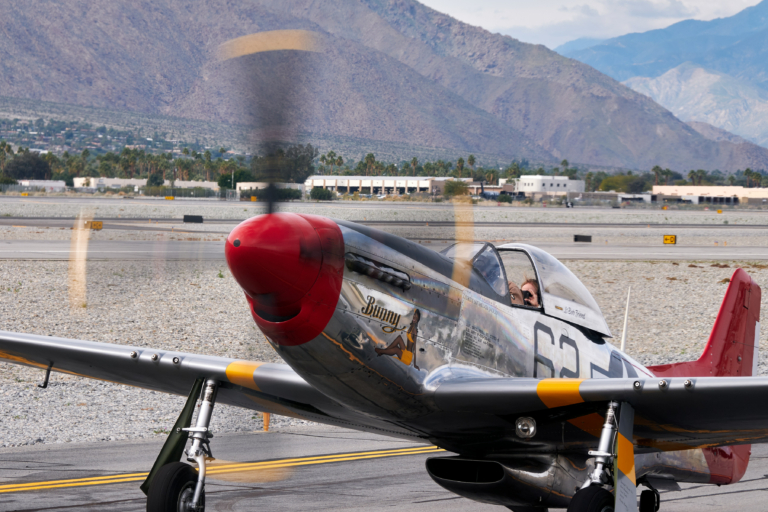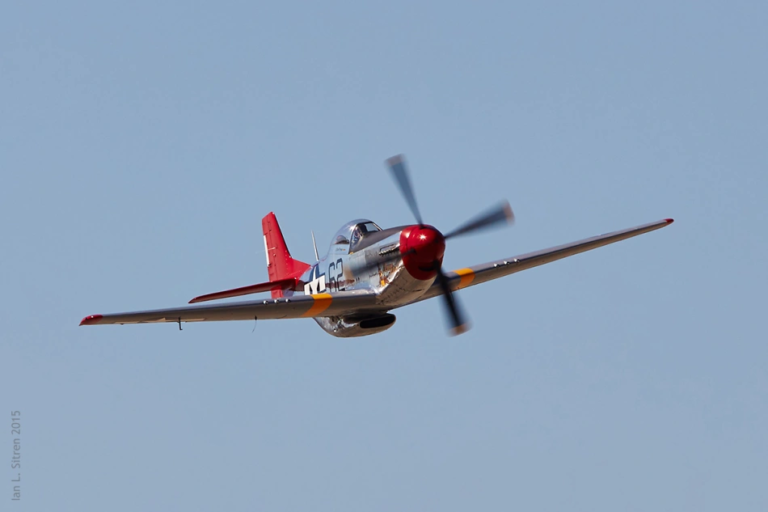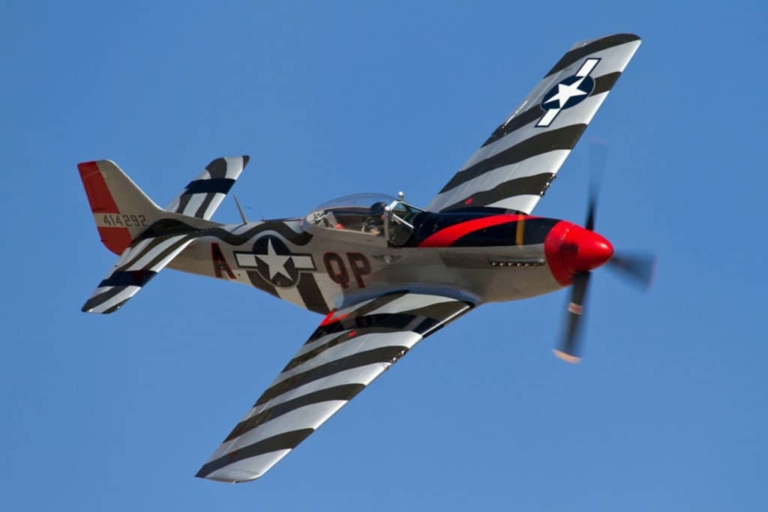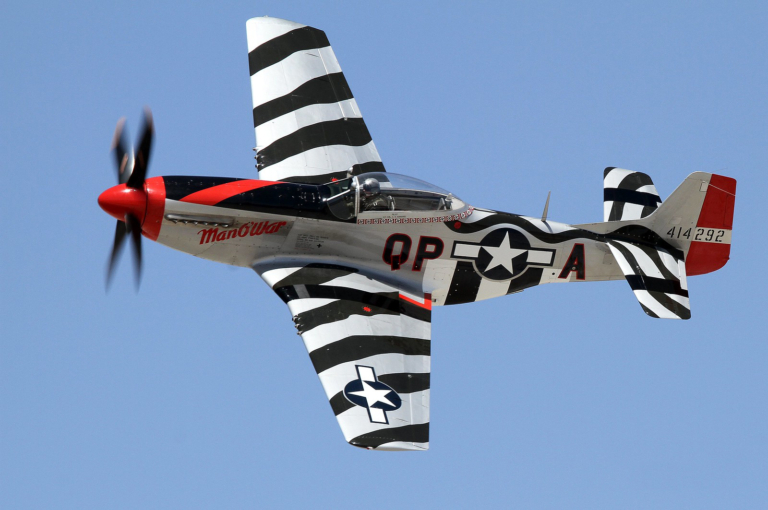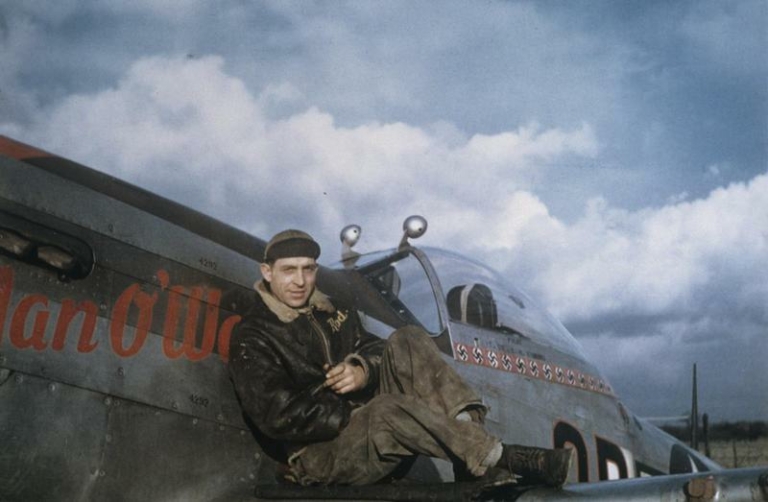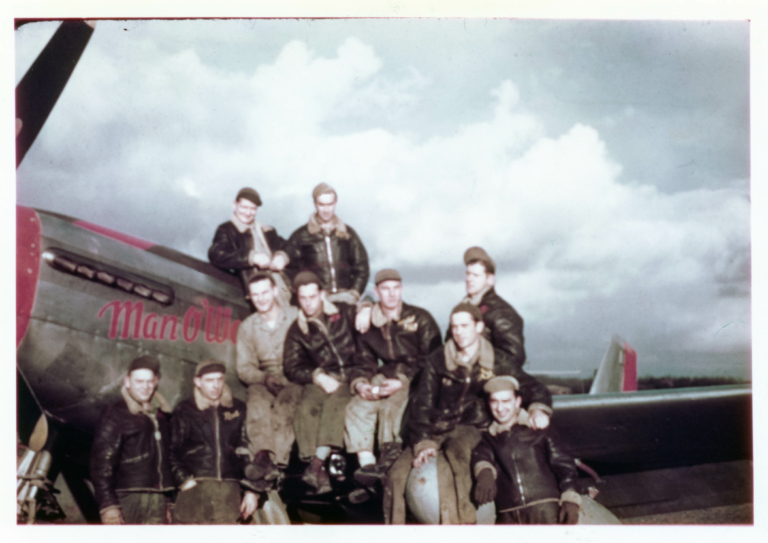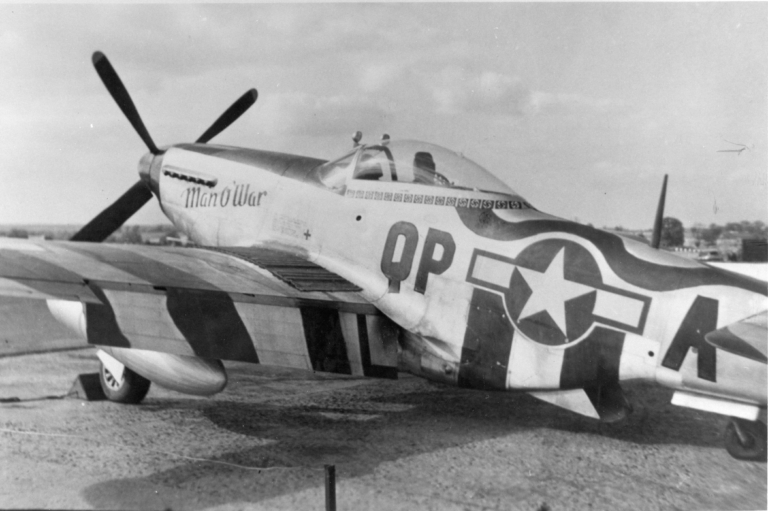P-51 Mustang – Summer Flights
CHARACTERISTICS
- Crew: 1 (currently 2)
- Length: 32 ft 3 in
- Wingspan: 37 ft 0 in
- Loaded weight: 9,200 lb Max
- Powerplant: 1 × Packard Merlin V-1650-7 liquid-cooled supercharged V-12
- 1,490 hp at 3,000 rpm
- Maximum speed: 437 mph
- Rated cruise speed: 362 mph
- Stall speed: 100 mph
- Range: 1,650 mi
- Service ceiling: 41,900 ft
ARMAMENT
- 6 × .50 caliber (12.7mm) M2 Browning machine guns
- 2 × hardpoints for up to 2,000 lb of bombs
- 6/10× T64 5.0 in
HISTORY
The North American Aviation P-51 Mustang is an American long-range, single-seat fighter and fighter-bomber used during World War II and the Korean War, among other conflicts. The Mustang was designed in April 1940 by a team headed by James Kindelberger of North American Aviation (NAA) in response to a requirement of the British Purchasing Commission. The Purchasing Commission approached North American Aviation to build Curtiss P-40 fighters under license for the Royal Air Force (RAF). Rather than build an old design from another company, North American Aviation proposed the design and production of a more modern fighter.
The Mustang was designed to use the Allison V-1710 engine, which had limited high-altitude performance in its earlier variants. The aircraft was first flown operationally by the RAF as a tactical-reconnaissance aircraft and fighter-bomber (Mustang Mk I). Replacing the Allison with a Rolls-Royce Merlin resulted in the P-51B/C (Mustang Mk III) model, and transformed the aircraft’s performance at altitudes above 15,000 ft (4,600 m) (without sacrificing range), allowing it to compete with the Luftwaffe’s fighters. The definitive version, the P-51D, was powered by the Packard V-1650-7, a license-built version of the two-speed, two-stage-supercharged Merlin 66.
From late 1943, P-51Bs and P-51Cs (supplemented by P-51Ds from mid-1944) were used by the USAAF’s Eighth Air Force to escort bombers in raids over Germany, while the RAF’s Second Tactical Air Force and the USAAF’s Ninth Air Force used the Merlin-powered Mustangs as fighter-bombers, roles in which the Mustang helped ensure Allied air superiority in 1944. The P-51 was also used by Allied air forces in the North African, Mediterranean, Italian, and Pacific theaters. During World War II, Mustang pilots claimed to have destroyed 4,950 enemy aircraft.
At the start of the Korean War, the Mustang, by then re-designated F-51, became a specialized fighter-bomber. Despite the advent of jet fighters, the Mustang remained in service with some air forces until the early 1980s. After the Korean War, Mustangs became popular civilian warbirds and air racing aircraft.
Our P-51 was constructed as a P-51D-30-NA by North American in Inglewood, CA, circa 1944. It was taken on by the United States Army Air Force with s/n 44-74908 in 1951. Purchased by RCAF in 1956, and damaged at RCAF Station Uplands, Ontario, that same year. It was stored unrepaired at Winnipeg until sold. Finally, it was restored to flight status by the Palm Springs Air Museum and dedicated to Lt. Col. Bob Friend and the Tuskegee Airmen “Red Tails.”
CHARACTERISTICS
- Crew: 1 (currently 2)
- Length: 32 ft 3 in
- Wingspan: 37 ft 0 in
- Loaded weight: 9,200 lb Max
- Powerplant: 1 × Packard Merlin V-1650-7 liquid-cooled supercharged V-12
- 1,490 hp at 3,000 rpm
- Maximum speed: 437 mph
- Rated cruise speed: 362 mph
- Stall speed: 100 mph
- Range: 1,650 mi
- Service ceiling: 41,900 ft
ARMAMENT
- 6 × .50 caliber (12.7mm) M2 Browning machine guns
- 2 × hardpoints for up to 2,000 lb of bombs
- 6/10× T64 5.0 in
HISTORY
This P-51D Mustang, tail number 44-72739, was built in the North American Aircraft factory in Inglewood, California on February 15, 1945 and was shipped to the fighter pool at Stanstead, England in March of that year. Too late to see combat in WWII, 44-72739 was returned to the US and assigned to the New Jersey National Guard.
P-51D 44-72739 was reclaimed by US Air Force in 1950 for service in the Korean War but again did not see any combat action. It was returned to National Guard duty until declared as surplus and auctioned in 1956.
Purchased by Universal Studios in 1957, the aircraft was displayed as part of an attraction that required a WWII fighter aircraft with a combat damaged appearance. Most notably the aircraft was used in the 1957 movie “Battle Hymn”. The aircraft had numerous holes punctured into it in addition to other deliberate damage to simulate a bullet ridden aircraft and was kept outside in the open for several years. With a stripped cockpit and engine compartment, an electric motor was mounted inside the nose to drive a “fake” propeller. It was retained by the studio until 1970 when it was auctioned after it was decided to build a new attraction.
In August 1970, Ascher Ward purchased the aircraft from Universal Studios and it was towed to Van Nuys Airport where it stayed for a short period of time. It was decided to move the aircraft to Chino, CA where it underwent a complete restoration at Aerosport hangar. The P-51D aircraft was registered as N44727 in 1972 and carried the nose art “Poontang”, possibly that of Lt. Ernest W Hopcroft’s P51D, 436th Fighter Squadron, 479th Fighter Group.
In 1974, N44727 was purchased by Elmer Ward (no relation) and received an authentic WWII paint scheme as Man O’ War the following year.
The aircraft continues to this day in the livery of Man’O’War (414292/QP-A) of the 334th Fighter Squadron of the 4th Fighter Group, the personal aircraft of Lt. Col. Claiborne H Kinnard, a highly decorated commander of the 4th Fighter Group, with 25 enemy aircraft destroyed to his credit.
“Man O’ War” is owned by the Ward family, and is currently on loan to PSAM.
BOOK YOUR P-51 SUMMER RIDE NOW!
Please Note: We do not offer special bookings for one P-51 or the other, rides will be flown in whichever plane is chosen for the weekend
~ Do not refresh the page or hit the back button while payment is processing ~

DISCLAIMER/FAQ
- Passengers who cannot board the aircraft without assistance will not fly. You must be capable of climbing and descending the equivalent of a standard ladder.
- The physical restrictions for all planes (other than the C-47) are: 6’5,” and 250 lbs. or smaller.
- All passengers are required to complete a Participant Release.
- For safety, all passengers must wear closed-toe shoes. No sandals or flip-flops will be allowed. Long pants are recommended.
- Large backpacks, shoulder bags, duffel bags, tripods or other bulky items are NOT permitted on the aircraft.
- No animals are permitted on the aircraft
- NO Firearms, Pepper or Chemical Sprays, Stun Devices or weapons of any kind are permitted on the aircraft.
- Passengers must be 13 years of age or older. Minors who fly (age 13-17) must have their parent or guardian complete a Participant Release for Minors. The parent or guardian must be present for the flight.
- No smoking and no vaping devices are allowed on any of our aircraft.
- No portable oxygen assistance devices are permitted.
- Flights may be canceled due to weather, mechanical, or crew availability.
If you have questions or concerns, please email
[email protected]


